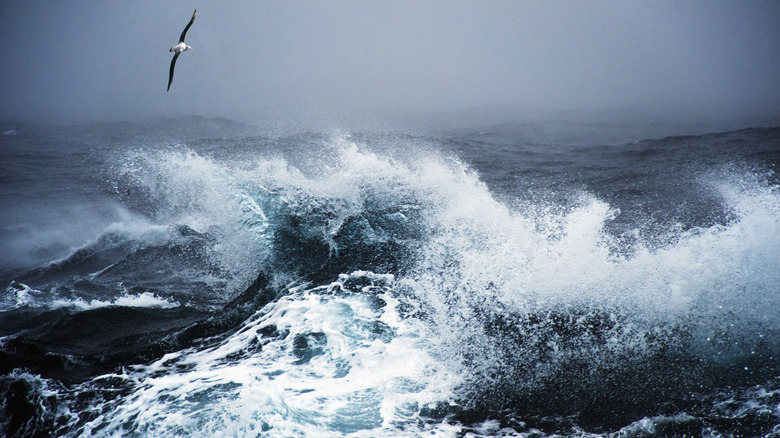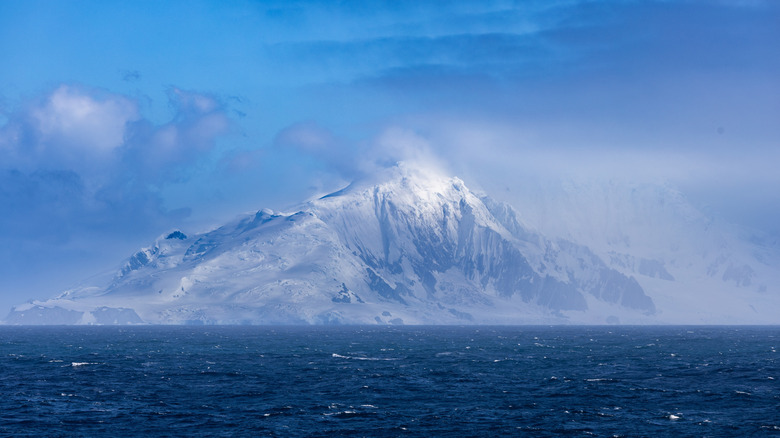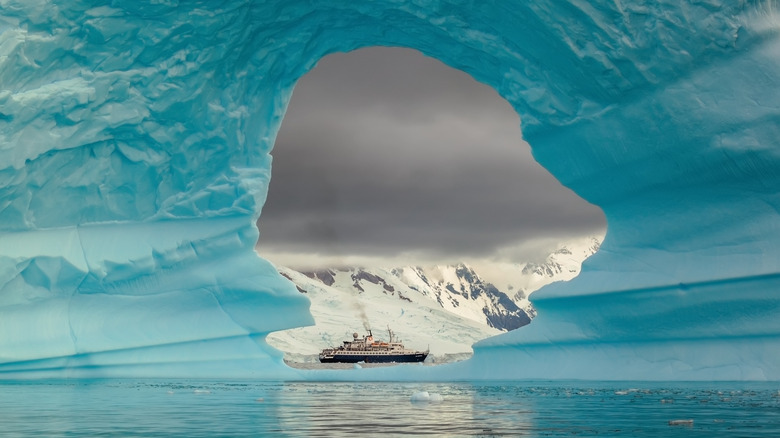Your Antarctica Cruise Might Cross This Dangerous, Stormy Ocean Passage That Sailors Dread
There are a few infamous waterways that strike fear (or at least anxiety) into the hearts of sailors everywhere. Some of them are known for pirates (even in the modern day), while others are known for shipwrecks. The Bermuda Triangle is known for mysteriously vanishing ships and planes, and the Northwest Passage has a record of trapping vessels in ice, stranding crews for all eternity. There's also Africa's Cape of Good Hope, originally called "the Cape of Storms" until it was renamed to make it more attractive to travelers.
And then there's the Drake Passage, perhaps the most notorious of all. Flowing between South America's southernmost tip and the shores of Antarctica, the Drake Passage is often called the world's "largest natural obstacle course." It regularly makes lists of the most terrifying places in the world, and its gale-force winds, waves that can top 50 feet, and unpredictable weather have reportedly sunk around 800 ships (resulting in the death of approximately 20,000 sailors). Yet, even though the Drake Passage is "600 miles of open sea, and some of the roughest conditions on the planet — with an equally inhospitable land of snow and ice awaiting you at the end of it" (via Julia Buckley for CNN), thousands of people still make the crossing each year. Taking a ship across the passage is still the best way to reach Antarctica.
The 'Drake Shake' or the 'Drake Lake'
Yep, if you want to go to Antarctica, the Drake Passage is one of the only routes (you can also charter a private flight if you have the extra cash). Take comfort in the fact that, even though the Drake can be scary, hundreds of ships and thousands of people successfully cross it each year. Thanks to modern advancements in weather technology, satellite transmissions increasing effective communications, and improvement in ship design, crossing the passage has become much safer. Captains and tour operators spend hours planning and researching each voyage, tracking the weather, and choosing the best path, both for the safety and comfort of the passengers.
Even with the improved technology and safety measures, "navigating the Drake is an extremely complex task that demands humility and a side of fear," says Drake veteran Captain Stanislas Devorsine (via CNN). It takes 48 hours to cross (both ways), and around two in 10 crossings are estimated to suffer from "the Drake Shake." The Drake Shake, which happens when the waters are relentlessly choppy, is not inevitable — occasionally, the passage will become the eerily calm "Drake Lake." The topography and location of the Drake mean that the ocean currents and winds can be so wild (no matter the time of year) that rough seas are inevitable, even with all of the newest technology.
To deal with the Drake Shake, experts advise taking seasickness pills before you enter open seas — "once you start spewing, tablets aren't going to be any use" (Antarctic photographer Jamie Lafferty via CNN) and staying in bed if you feel queasy. Watching the horizon is also reputed to help with seasickness, so get a room with a porthole or find a place on the ship with windows.
History, nature, and scenery in the Drake Passage
One good thing about the Drake Passage? It's home to incredibly unique, gorgeous landscapes and wildlife. Ever since 1616, when Willem Schouten made the first successful crossing, polar explorers (both of the scientific and adventurous bent) have been drawn to its stark beauty and dangerous waters. The deep blue waters, the blinding white ice shelves, sparking aquamarine icebergs, and soaring albatrosses have captured the world's imagination and made the treacherous crossing a rite of passage. In addition to its impressive natural beauty, the passage is one of the best places to see penguins, whales, and more in the world.
You'll never forget your trip on the Drake, whether you're one of the lucky few to experience calm seas or forced to muscle your way through the Drake Shake the whole time. Practice taking pictures in a moving vehicle because you'll want some memories — no matter the weather! (Unless your captain tells you to stop taking pictures and go to your cabin. Safety first, folks).


